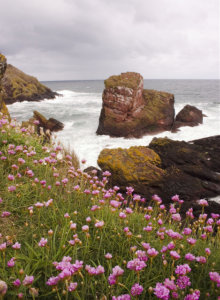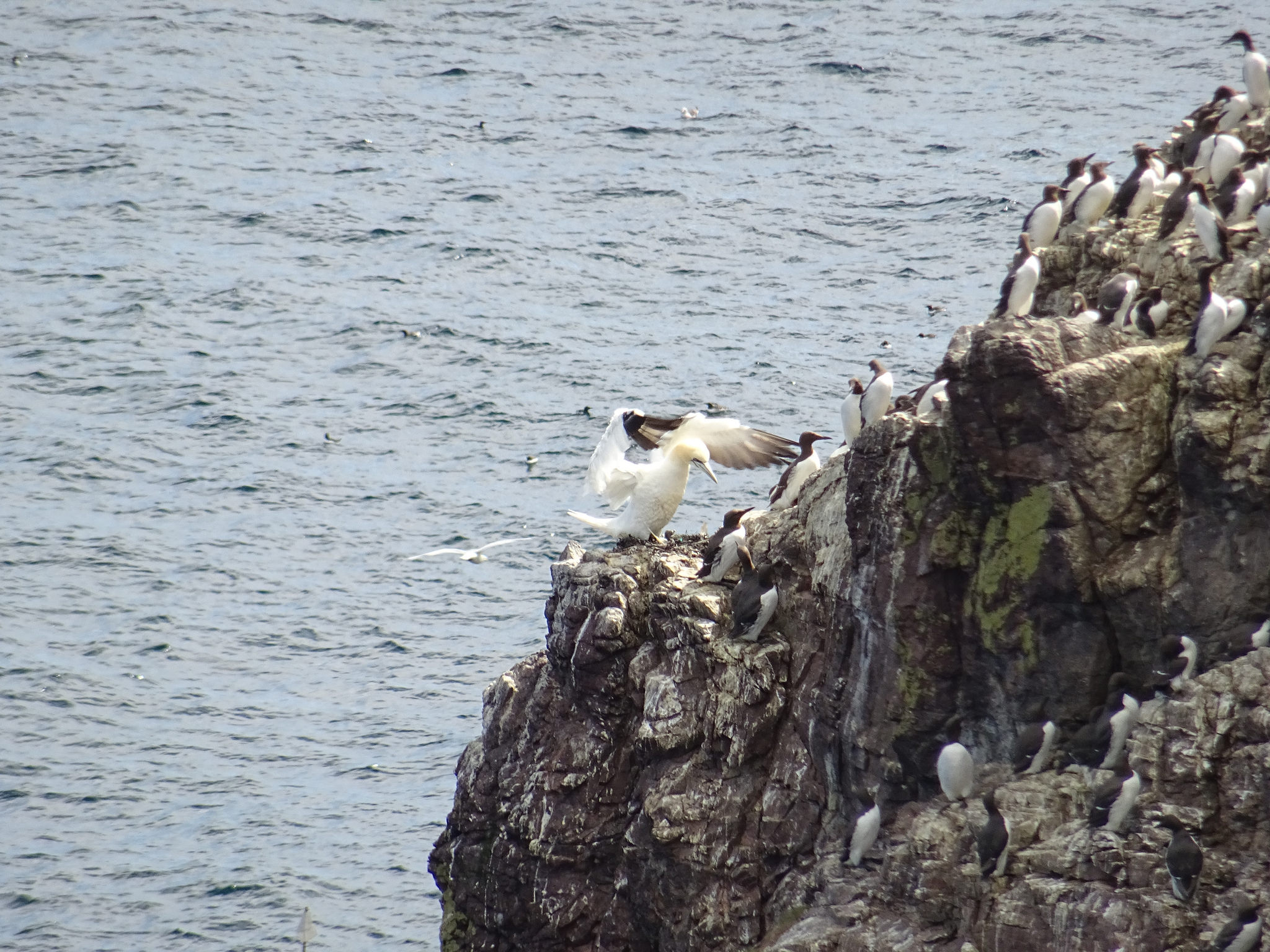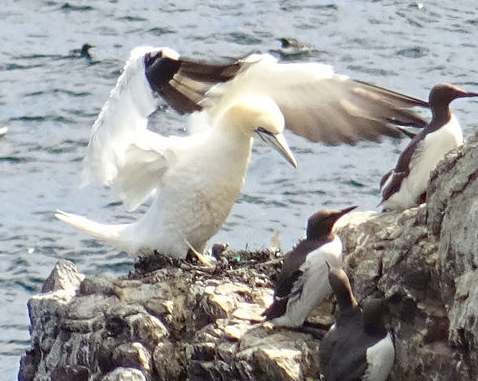
Staff at the National Trust for Scotland’s St Abb’s Head National Nature Reserve are celebrating a first this summer, as the first Gannet chick ever to be recorded there was seen on 7 July.
Last year, for the first time on record, Gannets attempted to nest at St Abb’s Head. In late May, a number of birds started prospecting one of the large seabird stacks with a few settling onto the stack and pairing up, looking like they were getting ready to breed. One pair even brought in nesting material, but nothing came of it.
This year, the prospecting birds came earlier and in larger numbers, with around 70 Gannets scouting out the same stack, and with many pairs settling on the stack and performing courtship displays. However, as with last year, after a short flurry of activity most of the birds left, leaving just three pairs of birds which have been sitting tight since then.
The sighting of an egg, at the beginning of June, was a first in itself, and the National Trust for Scotland Rangers have been watching and waiting with baited breath to see if anything would come of it.
The chick was spotted by Zander Salmond, Assistant Ranger for the National Trust for Scotland, who said, ‘I feel very privileged to be the first person ever to see a gannet chick at St Abb’s Head. It was such a momentous record that I called a colleague to verify my sighting. Gannet chicks are naked when they hatch, so the adults sit pretty tight on them to keep them warm until they develop insulating down so it was a nail biting hour and half, during which we were only getting the briefest of glimpses of something in the nest, before my colleague got a good enough view to confirm that it was definitely a chick and I wasn’t just seeing things!‘.


Liza Cole, Senior Ranger said, ‘With Bass Rock, the world’s largest breeding colony of gannets just a few miles up the coast, full to capacity, I suspected it was only a matter of time before gannets started checking out the cliffs at St Abb’s Head for suitable nest sites. Gannets are stunning birds to behold and there has been a palpable air of excitement surrounding their presence here at St Abb’s Head over the last couple of years. However, I do have slightly mixed feelings about them.
Over the last 20 years seabird numbers at St Abb’s Head have declined from 80,000 to just under 45,000 birds, reflecting UK wide declines. The only species that have maintained their numbers have been guillemots and razorbills. The stack on which the gannets have chosen to breed is a favoured breeding area for guillemots, so I fear that as gannet numbers increase, as they are bound to, the guillemots will be pushed out. This feels very much like a pivotal moment for the seabird colony at St Abb’s Head, and only time will tell what will happen in the years to come.‘.
Richard Luxmoore, Senior Nature Conservation Advisor said. ‘The Trust has been monitoring the rise and fall of seabird numbers at St Abb’s Head for over 30 years, and this is the beginning of a new chapter in the story. Most seabirds species are declining in number but gannets are bucking that trend, with numbers increasing by over 30 per cent in the last 10 years or so Declines in other species of seabirds have been linked to lack off food brought about by overfishing of sandeels and climate change. It is thought that because gannets can travel great distances, up to 500 km, from their nest site to forage and because they are adaptable in what they eat they rarely encounter food shortages.‘.
[registration_form]
Great news! Been a few years since my last visit so I must get back there soon.